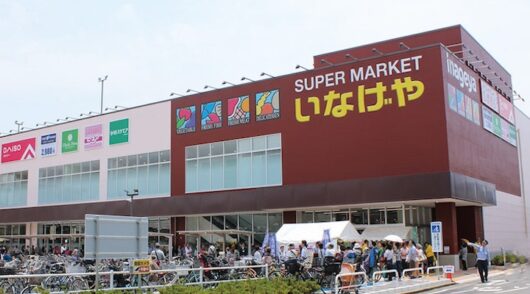Department stores around the world are under a lot of pressure.
In the US, Macy’s, Nordstrom and Neiman Marcus have all implemented massive closure programs.
In China too, major chains like Wanda have been closing dozens of outlets and the future of department stores is clouded by steadily declining network.
Chinese department stores are particularly exposed. After a decade of facing rapid mall expansion, they are now fighting in the most advanced digital environment, where online penetration in apparel retail is already above 25 per cent. Worse, their extreme fragmentation makes it difficult to invest fast enough in restructuring and technology.
Smaller markets in Southeast Asia have been less exposed because global online players were not focusing on them – but not anymore. Alibaba’s recent takeover of Lazada in Singapore could signal the beginning of harsher times for department stores throughout Southeast Asia.
Anticipation and courage will be necessary to resist or ride the online tsunami. Our team has been helping department store clients along five potential directions…
Right-size the network.
Most successful department stores are generally located in iconic downtown locations: Harrods in London, Galeries Lafayette in Paris, Isetan in Tokyo, Sogo in Hong Kong. Each major city has its landmark high street locations where historical players have built their reputation. Of course, these famous department stores put a lot of pride in offering the best merchandise and shopping experience, but in our view they are, above all, “protected” by their landmark status.
Successful department store chains have a few of these remarkable locations in their network. The most profitable among them, Harrods, has in fact only one location on Oxford Street! For all the others, right-sizing is the name of the game.
A very sharp knife should be applied to evaluating where to invest and where to give up, based on a solid assessment of each individual site’s merits and outlook.
Move along the value chain
Most department store chains in Asia and Europe are operating under a concession model, in which they are supporting brands’ sales through their supply chain capabilities, sales staff, centralised cash registry, CRM activities in exchange for a commission. They don’t buy and own stock – at least for most of their business.
In the US however, large department store chains have integrated merchandising and stock management capabilities in their value delivery model. This gives them access to a higher level of margin although scale is required to do this efficiently.
Chinese department store chains may be able to capture more value through deeper operational involvement, like their US counterparts, but only if they first build more scale. The only way to do that might be through increased industry concentration, namely mergers and integration to form larger players.
At the other extreme, another option might be to adopt mall-like approaches, renting space out to powerful brands, letting them operate the business and leverage their brand power to attract new traffic. For example, a Japanese department store invited Zara to take over an entire floor as a tenant, which helped them attract younger customers. Likewise, cosmetics retailers like Sephora, if given the responsibility to run a portion of the beauty floor, may bring with them exclusive brands that may not be accessible otherwise, with the trendier crowds that these brands appeal to.
Segment, focus, differentiate
How about focusing on what department stores are meant to be? A place where customers can enjoy products and services they cannot find in their local shop.
This strategy would require going back to basics:
- Know your target customers.
- Delight them with distinctively curated assortments.
- Offer them exclusive pieces that are not available anywhere else.
- Surprise them with unique experiences and events.
- Build intimacy and loyalty with them through multiple meaningful touchpoints, online and offline.
For example, Galeries Lafayette in Beijing has chosen to focus on younger customers looking for trendy offerings and interested in expressing their individuality rather than following conventional tastes. They have crafted a unique assortment of fashionable “access” luxury brands not available elsewhere, in a modern visual setting, with unique top-floor dining destinations.
Another approach is to focus on categories which can benefit from a concentrated browsing and trial environment, that department stores are best suited for. For example shoes, cosmetics and premium food.
They could also propose original experiences that department stores are well positioned to offer. For example, catwalk shows, make-up training and cooking classes. Or they could transport their know-how to cities without department stores, inviting local customers to trunk shows in prestigious venues.
Grow private labels
An effective way to capture a bigger margin and to get relief from multi-channel discounting pressure is to launch private label brands. Many of the top department stores have built strong private brands, such as Brummel at Printemps, Harrods at Harrods and St John’s Bay at JCPenney.
This is not a trivial route because it requires building capabilities to design, develop and source relevant collections and to price them competitively.
This strategy is easier to adopt by large scale chains with stronger investment capacity. Smaller players – like fragmented Asian players – may not be able to engage in private labelling without alliances.
Go online
Most department store chains have launched online stores to respond to the expectations of increasingly internet-savvy customers.
Large US chains are most advanced in this game, simply because of their operating model. They already own the stock, therefore opening an e-commerce site is closer to just opening an additional store. Likewise, UK players focused on private labels like Marks and Spencer or John Lewis operate state-of-the-art online stores that have little to envy pure-play specialists like Net-a-porter or Asos.
Asian department stores however are not yet as sophisticated. Their websites are merely focusing on loyalty programs, customer services and gift catalogues, but rarely include the full offer available in their physical stores. One of the reasons is that since they are operating under a consignment model, it is harder for them to leverage in-house merchandising and trading capabilities as US players do. This is unless they transpose the consignment model to the web, which requires addressing complex IT and fulfilment integration issues.
Even without full e-commerce capabilities, there are a lot of opportunities to create seamless online-to-offline pathways (and vice-versa) to enhance customers’ experience.
Not building these capabilities is not an option. Alliances – for example with flash sale online players who have already built an e-commerce supply chain and fulfilment infrastructure – might help accelerate the transition.
Re-invention
The biggest risk for department stores would be to stand still, or to try to compete head-on with their opponents, trying to mimic them in doing things that are outside their core skills, with subscale resources.
There is ample room for department stores to reinvent themselves, by being creative in fulfilling customers’ evolving lifestyle and preferences, leveraging their unique strengths, offline and online.
As the Greek philosopher Plato said: “Necessity is the mother of invention”.
Pascal Martin is a partner with OC&C Strategy Consultants in Hong Kong.








